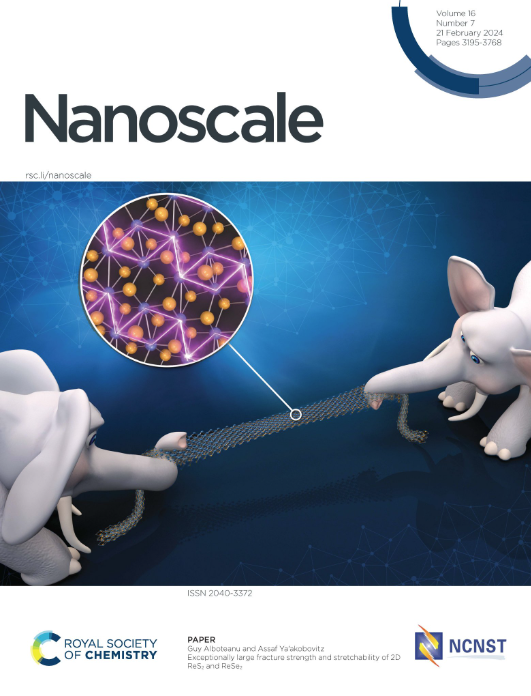Driving Catalytic Carbyne Formation within Endohedral DWCNTs: The role of Ni vs Pt
IF 5.1
3区 材料科学
Q1 CHEMISTRY, MULTIDISCIPLINARY
引用次数: 0
Abstract
The growing demand for high-modulus, high-strength, and lightweight materials has spurred interest in carbynes; however, their catalytic synthesis mechanisms remain largely unexplored. In this study, we use reactive molecular dynamics simulations to investigate the catalytic synthesis of endohedral carbynes within double-walled carbon nanotubes, comparing the distinct roles of Ni and Pt catalysts. Our findings indicate that Ni catalysts are more effective, promoting a stable, self-propagating chain growth mechanism with the potential for extreme lengths. In contrast, Pt catalysts exhibit higher energy barriers, resulting in fragmented, metallic carbyne-like structures; a finding which provides a mechanistic explanation for experimentally observed metalated carbynes. This study not only identifies an efficient catalyst for carbyne synthesis but also suggests a new route to novel encapsulated materials, advancing the rational design of nanocarbons for demanding applications.ich facilitates carbon feedstock attachment. In contrast, Pt catalysts present higher energy barriers, leading to fragmented, metallic carbyne-like structures due to less-controlled carbon bonding. This study identifies an efficient catalyst for efficient carbyne synthesis and offers valuable insights into the distinct mechanisms of carbyne formation, paving the way for developing advanced nanocarbon materials for demanding applications.内嵌DWCNTs内催化碳炔生成:Ni和Pt的作用
对高模量、高强度和轻质材料的需求不断增长,激发了人们对碳炔的兴趣;然而,它们的催化合成机制在很大程度上仍未被探索。在这项研究中,我们利用反应分子动力学模拟研究了在双壁碳纳米管中催化合成内源性碳炔,比较了Ni和Pt催化剂的不同作用。我们的研究结果表明,Ni催化剂更有效,促进了稳定的、自传播的链生长机制,并具有极端长度的潜力。相比之下,Pt催化剂表现出更高的能垒,形成碎片状的金属碳类结构;这一发现为实验观察到的金属化碳提供了机制解释。本研究不仅确定了一种高效的碳炔合成催化剂,而且为新型封装材料的制备提供了一条新途径,为纳米碳的合理设计提供了依据。它有利于碳原料的附着。相比之下,Pt催化剂表现出更高的能量势垒,由于碳键控制较少,导致碎片化的金属类碳结构。本研究确定了一种高效的碳炔合成催化剂,并为碳炔形成的独特机制提供了有价值的见解,为开发用于苛刻应用的先进纳米碳材料铺平了道路。
本文章由计算机程序翻译,如有差异,请以英文原文为准。
求助全文
约1分钟内获得全文
求助全文
来源期刊

Nanoscale
CHEMISTRY, MULTIDISCIPLINARY-NANOSCIENCE & NANOTECHNOLOGY
CiteScore
12.10
自引率
3.00%
发文量
1628
审稿时长
1.6 months
期刊介绍:
Nanoscale is a high-impact international journal, publishing high-quality research across nanoscience and nanotechnology. Nanoscale publishes a full mix of research articles on experimental and theoretical work, including reviews, communications, and full papers.Highly interdisciplinary, this journal appeals to scientists, researchers and professionals interested in nanoscience and nanotechnology, quantum materials and quantum technology, including the areas of physics, chemistry, biology, medicine, materials, energy/environment, information technology, detection science, healthcare and drug discovery, and electronics.
 求助内容:
求助内容: 应助结果提醒方式:
应助结果提醒方式:


